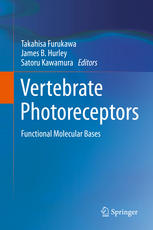

Most ebook files are in PDF format, so you can easily read them using various software such as Foxit Reader or directly on the Google Chrome browser.
Some ebook files are released by publishers in other formats such as .awz, .mobi, .epub, .fb2, etc. You may need to install specific software to read these formats on mobile/PC, such as Calibre.
Please read the tutorial at this link: https://ebookbell.com/faq
We offer FREE conversion to the popular formats you request; however, this may take some time. Therefore, right after payment, please email us, and we will try to provide the service as quickly as possible.
For some exceptional file formats or broken links (if any), please refrain from opening any disputes. Instead, email us first, and we will try to assist within a maximum of 6 hours.
EbookBell Team

0.0
0 reviewsThis book provides a series of comprehensive views on various important aspects of vertebrate photoreceptors. The vertebrate retina is a tissue that provides unique experimental advantages to neuroscientists. Photoreceptor neurons are abundant in this tissue and they are readily identifiable and easily isolated. These features make them an outstanding model for studying neuronal mechanisms of signal transduction, adaptation, synaptic transmission, development, differentiation, diseases and regeneration. Thanks to recent advances in genetic analysis, it also is possible to link biochemical and physiological investigations to understand the molecular mechanisms of vertebrate photoreceptors within a functioning retina in a living animal.
Photoreceptors are the most deeply studied sensory receptor cells, but readers will find that many important questions remain. We still do not know how photoreceptors, visual pigments and their signaling pathways evolved, how they were generated and how they are maintained. This book will make clear what is known and what is not known. The chapters are selected from fields of studies that have contributed to a broad understanding of the birth, development, structure, function and death of photoreceptor neurons. The underlying common word in all of the chapters that is used to describe these mechanisms is “molecule”. Only with this word can we understand how these highly specific neurons function and survive. It is challenging for even the foremost researchers to cover all aspects of the subject. Understanding photoreceptors from several different points of view that share a molecular perspective will provide readers with a useful interdisciplinary perspective.